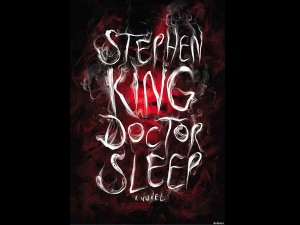
I read it in college and remembered cutting class just so I could maximize the daylight to read it. I holed up in my car, parked in front of the cafeteria, flipping the pages as quickly as I could, because as soon as the sun went down, I’d slam the book shut.
I tried reading it once before bedtime, but the imagery it brought up was so vividly nightmarish that I ended up not getting any sleep. Even the cover, which featured a glaring little boy, scared me so much that I’d stash the book with its pages facing out in my shelf so I wouldn’t have to see the boy’s face, which was also printed on the spine.
“The Shining” was such a hit that it was adapted into a film by no less than Stanley Kubrick (although King went on record to say that he hated the Kubrick version).
Around two years ago, King announced that he was working on a sequel to “The Shining.” The fans were thrilled; who doesn’t want to know what happened to Danny Torrance, the little “redrum” boy with psychic powers who was nearly eaten alive by an evil hotel?
The sequel, which was finally released last week, is called “Doctor Sleep.” The first few chapters, or prefatory matters, as King called it, picks up almost immediately after Danny’s horrifying experience at the Overlook Hotel.
Fine storyteller
Though already destroyed, the hotel is still a looming fixture in Danny’s life, because though he survives his ordeal with supernatural evil, he is still plagued by personal demons brought on by the trauma and his (psychotic) daddy issues.
“Doctor Sleep” is King in his element, not as someone who can dole out the horror, but as a fine storyteller. We knew we loved the book because we devoured the pages after the first eight chapters and then slowed down to a crawl when we realized we were halfway to finishing the book; we didn’t want it to end so quickly.
We didn’t want to leave the world of the adult Danny Torrance (now just “Dan”), a lovable character reminiscent of Johnny Smith in “The Dead Zone,” and his star pupil Abra.
The secondary characters are also endearing, the villains so deplorable we couldn’t wait to see them get their comeuppance, the way we cheered when Annie Wilkes in “Misery” got hers.
Other demons
This is like “Firestarter,” “The Dead Zone” and “The Shining” all rolled into one riot of a novel. Of course we could be biased, since we’re huge fans of King. He could write a book about a prophetic turd, call it “Nosferaturd,” and we’d still lap it up.
Though the story deals with the supernatural, other demons are highlighted in the story, particularly addiction. It’s no big secret that some of King’s finest works were written while under the influence of booze and drugs; in fact, “The Shining” was quite autobiographical, as it told the story of a writer trying to wrestle with his own alcoholic past.
Each page in “Doctor Sleep” detailing the uphill climb back into sobriety is heartfelt and raw; for Dan Torrance, becoming sober is a victory just as big as escaping the Overlook Hotel—maybe even bigger, because while ghosts can be vanquished with psychic powers, battling addiction is often a lifelong fight.
Worth the wait
Though “Doctor Sleep” took 35 years to release, it was well worth the wait. It’s different from its predecessor—even King admits that it would be hard to top the fright readers had from being isolated with the Torrance family in a haunted hotel. King did not set out to write this sequel to top “The Shining”; he revisited Danny Torrance just so we can see if the kid grows up all right, and he does.
“Doctor Sleep” is available at National Book Store, and as an eBook via www.nationalbookstore.com.ph/kobo (requires a Kobo reading device or app on iOS or Android devices).